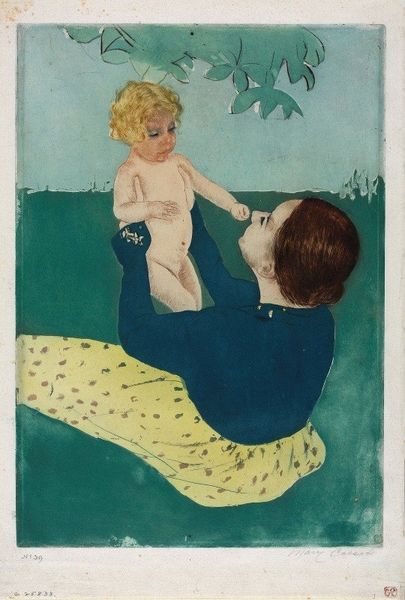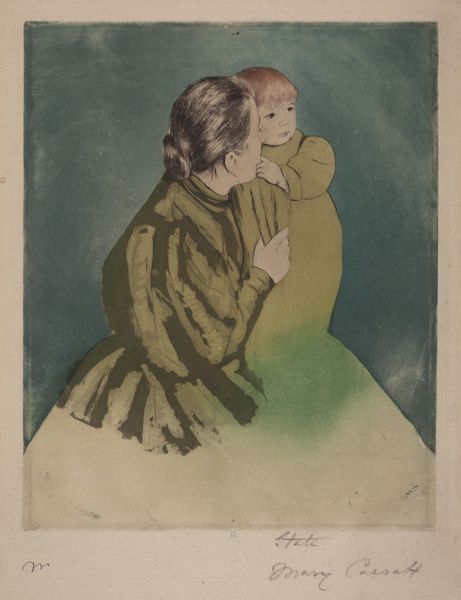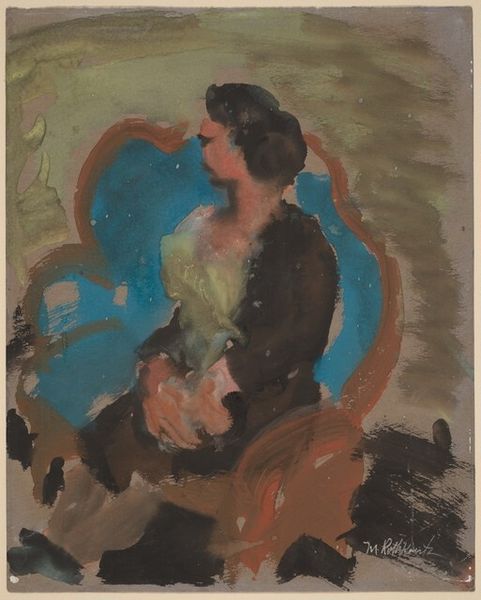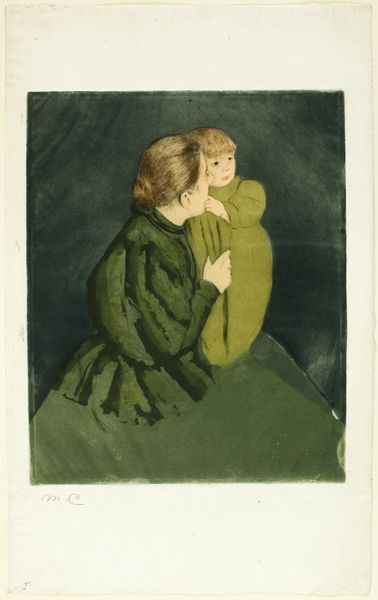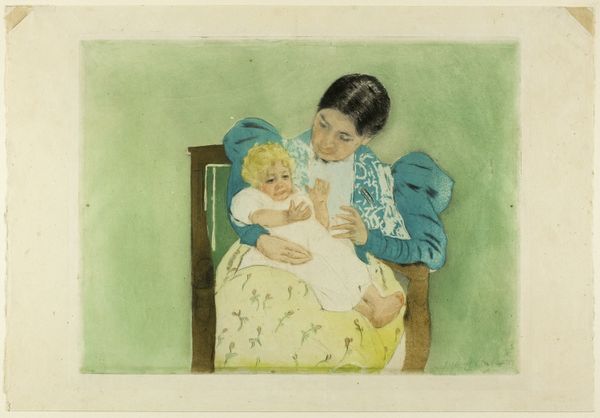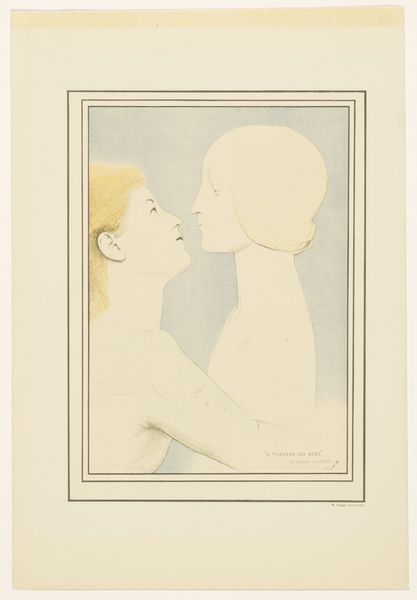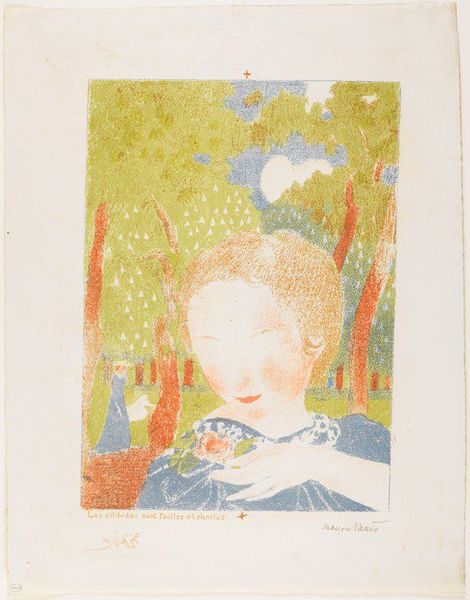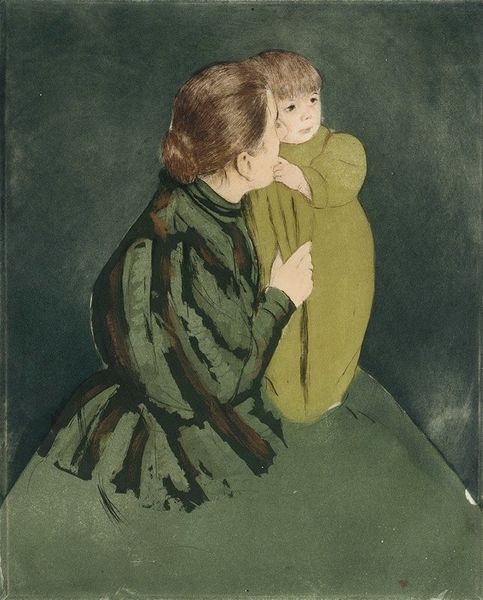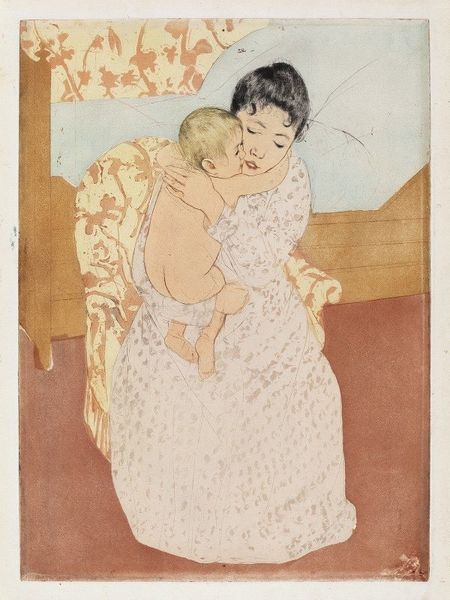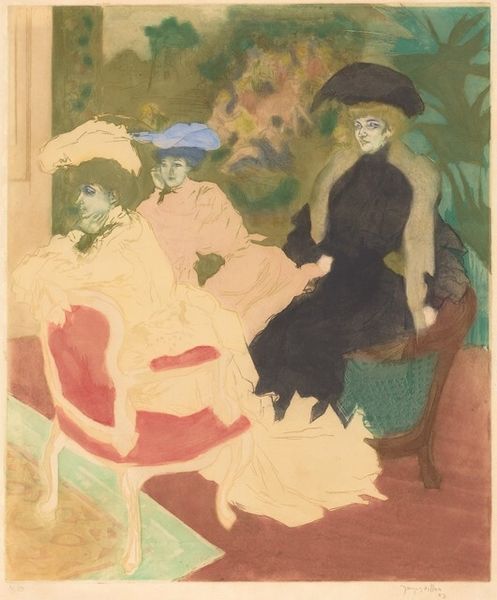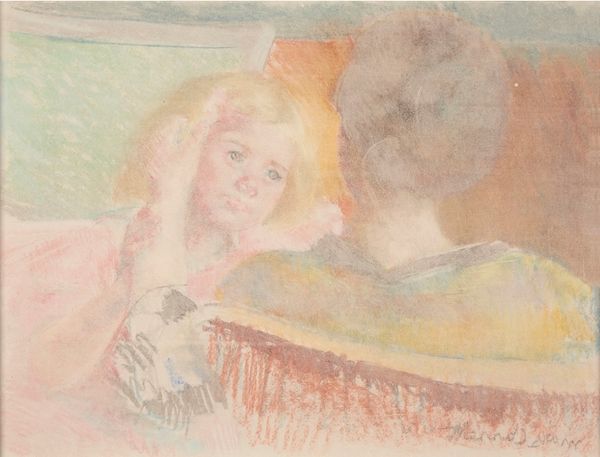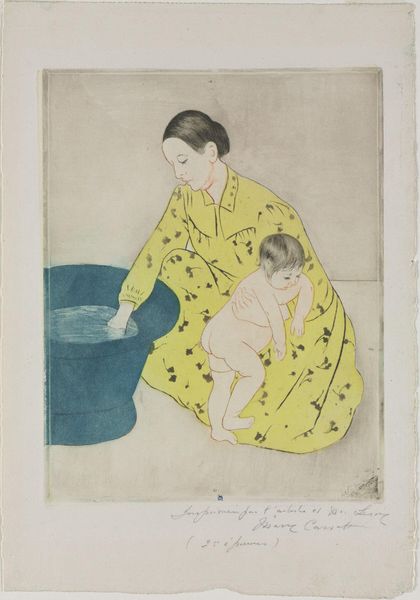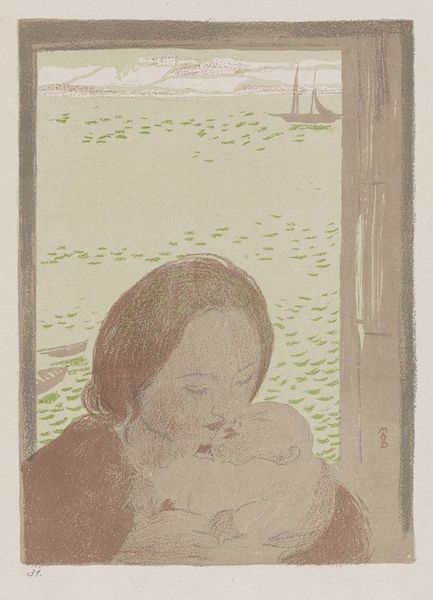
Copyright: Public Domain: Artvee
Curator: Mary Cassatt’s “By the Pond”, circa 1896, strikes me immediately. It’s almost dreamlike in its softness. The colors are muted, but the interaction between the mother and child feels very grounded. Editor: Yes, there's an undeniable intimacy. Looking at it from a historical perspective, this piece is significant for Cassatt's exploration of the mother-child bond within the context of late 19th-century society. Curator: Absolutely. I see the way the mother gently holds the child, almost protectively, which suggests both tenderness and a certain societal expectation. Is the woman forced into domestic roles as a primary theme for Cassatt? Editor: In some ways, yes. Cassatt herself never married or had children, so her interest lies in depicting the complexities of women’s lives, often within the domestic sphere, but it’s not about endorsing or condemning those roles; it’s more about observation and quiet representation. Consider how rarely these intimate moments were displayed in the artistic spaces of that time. Curator: It really speaks to the underrepresentation of women's experiences at the time. I am especially drawn to the child’s averted gaze. It disrupts the usual sentimental image. Editor: Good point, that detail invites contemplation. We are looking at what could be considered an ordinary event, maybe a moment of peace by a pond. What do you believe it signals to an audience now, versus when it was painted? Curator: Well, in our current culture we constantly analyze depictions of women, maternity, and beauty. We interrogate who has the right to represent whom, or which type of figure. It sparks broader questions about the power dynamics at play when capturing someone else’s image, the subtle layers of visibility and erasure. Editor: Certainly. It would have provided a contrasting view during Cassatt's era that promoted other views. Considering that Cassatt chose to live independently as an artist, her portrayal of women in domestic settings can be seen as a commentary on societal constraints and perhaps a reflection of her own choices. Curator: Indeed. Even with the subtle nuances, this is still ripe with cultural significance. Editor: Absolutely, a delicate piece that invites us to think critically about representation.
Comments
No comments
Be the first to comment and join the conversation on the ultimate creative platform.
